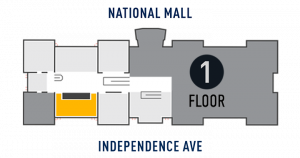From the mid-1970s to 2018, Sean D. Tucker rolled and tumbled like no other air show pilot. For the last ten years of his solo aerobatic career, Tucker flew the unique Challenger III, built for him by Steve Wolf of Specialty Aero and completed by Tucker’s own Aviation Specialties Unlimited team. The Challenger III, considered the most advanced biplane of its time, was built to enable and withstand Tucker’s maneuvers—like rolling at 400 degrees per second or literally flipping the plane through the air. His signature “centrifuge” is described by air show pilot Debby Gary, an early instructor of Tucker’s, as “shoulder over tail, six, seven, eight times to the bone-pounding sound of whomp, whomp, whomp… as it winds tighter, faster and more violent round its own right wingtip.”
Tucker started out as a crop duster over the fields of central California. Learning aerobatics helped him feel more comfortable in the cockpit, and soon he studied with seven-time US National and World Aerobatic Champion Leo Loudenslager and the legendary WWII, test, and air show pilot Bob Hoover. After winning the 1988 Advanced National Aerobatic Champion, he devoted himself exclusively to the airshow circuit. Known for his passion for aviation, Tucker works steadily to bring young people into the aerospace community. He founded Tutima Academy aerobatic flight school and co-founded the Bob Hoover Academy, engaging at-risk teens in science, technology, engineering, and math (STEM) education. He also chaired the Experimental Aircraft Association’s Young Eagles first flight children’s program.
Tucker’s first air show aircraft was the Pitts S-1A, followed by the S-2B. Curtis Pitts designed his small highly maneuverable biplanes around the light, horizontally opposed engines of the 1940s; earlier biplanes were much larger and sported heavy round engines. Follow the success of the S-1S, with four ailerons, in which American pilots swept the 1972 World Aerobatic Championship, the Pitts became the aerobatic pilot’s aircraft of choice and continues today as a requisite part of advanced aerobatic training.
The Christen Eagle biplane design became the basis for Sean’s next aircraft, the Challenger I, followed by the modified Challenger II (eventually with eight ailerons). In 2006, Tucker survived a catastrophic control failure in the Challenger II, parachuting to safety at his friend Wyche Coleman’s ranch in Texas.
While he continued flying his backup Pitts S-2S for the next few seasons, a new opportunity arose due to Tucker’s now total mastery of his previous aircraft and Coleman and team members interest in the building of a newly engineered, data-driven biplane design. Based on extraordinary analysis and testing by Coleman, who had already commissioned renowned aerobatic builder Steve Wolf to design a new biplane, and Tucker’s son Eric, (both young aerobatic pilots in Tucker’s Stars of Tomorrow team at the time), the new design would incorporate these major changes: 1. A better profile view from the side to present better in competition aerobatic flying, 2. An airfoil “flying” tail rather than flat slab style, 3. Reclined seating position for G tolerance, comfort, and visibility, 4. Better fuel system with removable travel tank, 5. Several aerodynamic changes to reduce drag and 6. Interconnected fuselage tubing that could be easily check for cracks by pressurizing with nitrogen rather than looking at every weld with a flashlight.
Coleman’s Wolfpitts Pro (no relation to the actual Pitts design) was delivered in 2007 and, in an aerial “drag race” blew away Tucker’s Pitts S-1S. Tucker then commissioned the completion of an already started second Wolfpitts airframe and the Challenger III was born. Wolf’s clean sheet design incorporated the major requirements and other changes from the ground up.
Delivered in 2010, the Challenger III is the most sophisticated and dynamic version of the aerobatic biplane design to date. Drawing upon modern engineering it is a one-of-a-kind single-seat aerobatic biplane designed for “unlimited” aerobatic flight. It has a steel tube airframe with wood spars and fabric-covered wings and fuselage. A sleek windshield, the streamlined cowling and polished cylinders for smoother airflow give it more speed. The “flying tail” of carbon graphite vertical fin with aluminum rudder becomes a robust control surface, allowing Tucker to fly sustained knife-flight and even backwards flight. Eight ailerons and curved wing tips provide precision maneuverability. The 400+ HP fuel injected Lycoming engine features aluminum drag racing pistons and a cold-air induction system. The Hartzell “The Claw” aerobatic 3-blade propeller is carbon fiber and Kevlar with electroformed nickel leading edge and an integral stainless-steel shank. The aircraft is fitted with smoke generators and can accommodate cameras.
The Challenger III is painted in a bright red paint scheme featuring “Oracle,” Tucker’s primary sponsor until his retirement from solo aerobatic flight in 2018, and many other sponsor decals. It took five years for Wolf and Tony Horvath to build this sophisticated “barnstormer” to Tucker’s specifications in terms of performance, safety and lessons learned through years of experience. Team members Tom Dygert, Brian Norris, and Clyde Green completed the project and then disassembled and rebuilt the aircraft prior to each airshow season. Sean Tucker and donor David Ellison were on hand for the Challenger III’s arrival via truck at the Steven F. Udvar-Hazy Center truck on May 3, 2021.
After flying airshows for more than 40 years, Sean D. Tucker has more than 26,000 flight time hours. He holds an ACE ground level card (Aerobatic Competency Evaluation lowest performance altitude) and performs unique maneuvers as low as 10 feet AGL. His accolades include the National Aviation Hall of Fame, the International Council of Air Shows Hall of Fame, the R.A. “Bob” Hoover Trophy, and NASM’s 25 Living Legends of Flight. Tucker’s commitment to aviation, safety and inspiration are of the highest quality.

